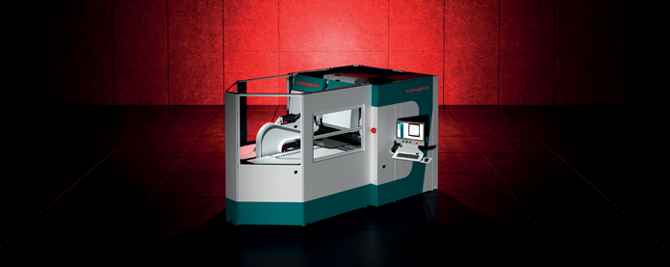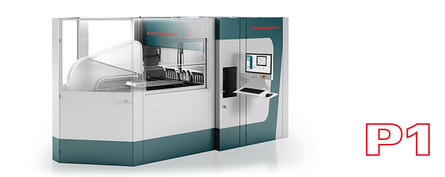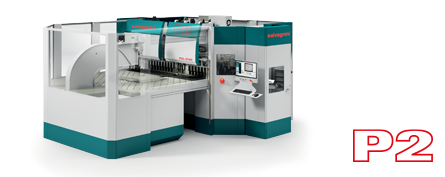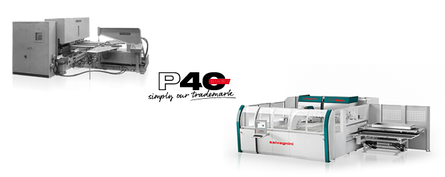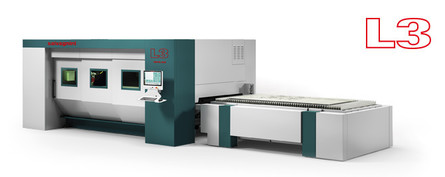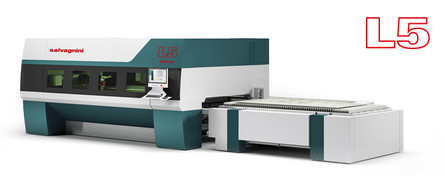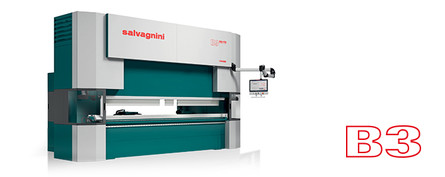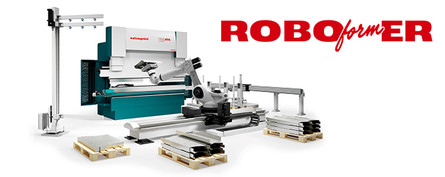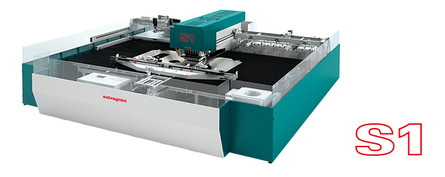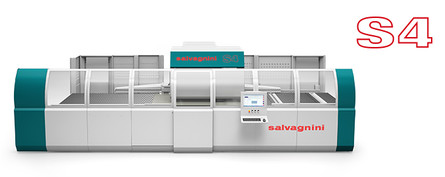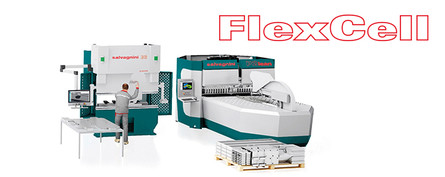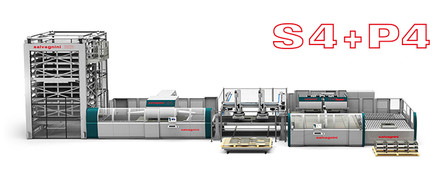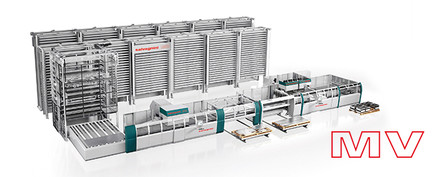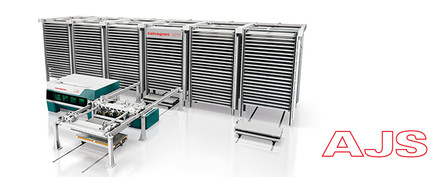P1 - Versatile and productive electric panel bender
The P1 natively combines productivity, with its automatic bending and handling cycles, and versatility, with its universal bending tools and patented kinematics.
Flexible automation
It uses universal bending tools which automatically adapt in-cycle to the panel geometry, without machine down times or manual re-tooling, allowing batch-one or kit productions.
Sustainable technology
The technical solutions adopted, including the use of only pneumatic and electric drives, allow it to respect both people and the environment without reducing productivity. The panel bender consumes less than 3 kW and has truly compact overall dimensions, of just 8 m2.
Adaptive system
The integrated adaptive technologies (advanced sensors, bending formula, MAC3.0) make the system intelligent and able to automatically adapt to changes in the material and the external environment, eliminating waste and corrections, and extending the range of products that can be made.
Great versatility
With the bending unit's patented kinematics, the P1 panel bender can bend a wide variety of items, achieving bends that cannot be made on any other bending machine.
Connectivity 4.0
The proprietary LINKS and OPS softwares establish communication between the system and the company departments involved in the production flow.
- PRODUCTIVITY
- ADAPTIVITY
- PRECISION
How to combine productivity and flexibility?
Conventional bending is characterized by an average OEE of 30%, and flexibility depends on the tool change system, which is often costly and time-consuming, with longer times compared to panel benders, or on the installation of more than one press brake. The P1 compact electric panel bender natively combines productivity, with its automatic bending and handling cycles, and flexibility, with its universal bending tools.
How long does re-tooling take?
The P1 doesn’t require re-tooling: the upper and lower blades, the counterblade and the blankholder are universal tools that are able to process the whole range of thicknesses and machinable materials.
Do manual loading and unloading affect the total cycle time?
Loading and unloading are performed by the operator, who positions the sheet metal on the worktable and collects the product after bending. The P1's cycle minimizes the impact of these activities on total cycle time, as it allows the product to be unloaded after positioning the sheet on the worktable, thus combining two operations in a single action.
Does the P1lean's set-up affect productivity?
The set-up has minimal impact on the panel bender's productivity: when the program is loaded, the blankholder automatically adapts in masked time, and the manipulator gets into position for gripping and handling the sheet.
How to produce in kits or batch-one?
The P1 is equipped with the ABA automatic blankholder, which automatically adapts the length of the tool according to the size of the part to be produced without the need for machine downtime or manual re-tooling even in-cycle: the ideal solution for batch-one and kit production.
How do we achieve high dynamics?
The very small masses involved and the optimized dimensions of the panel bender allow the bladeholder to reach a greater degree of freedom in its movements, and positions from where it can even make bends that would not be feasible on other panel benders. Furthermore, the electric drives and patented kinematics allow bending in less than 2 seconds.
How to make production independent of changes in material?
MAC3.0 is the set of integrated technologies – sensors, formulas and algorithms – that make the panel bender intelligent: it eliminates waste and reduces corrections, measuring in-cycle and automatically compensating any variability in the material being machined.
How to make production independent of external variations?
The P1 integrates advanced sensors that measure the effective size of the part to be machined. The data are fed in real time into the bending formula, which defines the correct force to apply to the sheet metal, guaranteeing the precision, repeatability and quality of the finished product.
How to adapt the panel bender to different production needs?
With the bending unit's patented kinematics, the P1 panel bender can achieve bends and geometries that cannot be made on any other bending machine.
How to make the process reactive to changes in the production lists?
The P1 can be equipped with proprietary OPS software, which ensures communication between the panel bender and the factory ERP: depending on needs, OPS manages the production of sequences of different parts. Universal bending tools, automatic in-cycle set-up and automatic handling allow the system to respond to any requests immediately.
How to achieve maximum precision?
The sheet metal is centered, just once at the start of the process, against controlled reference stops: this minimizes the cycle time as well as any precision errors, which are all absorbed by the first bend. The bending formula automatically optimizes the bending parameters to reduce waste, while MAC3.0 detects and automatically compensates any variability in the material to guarantee precise, high-quality bends.





